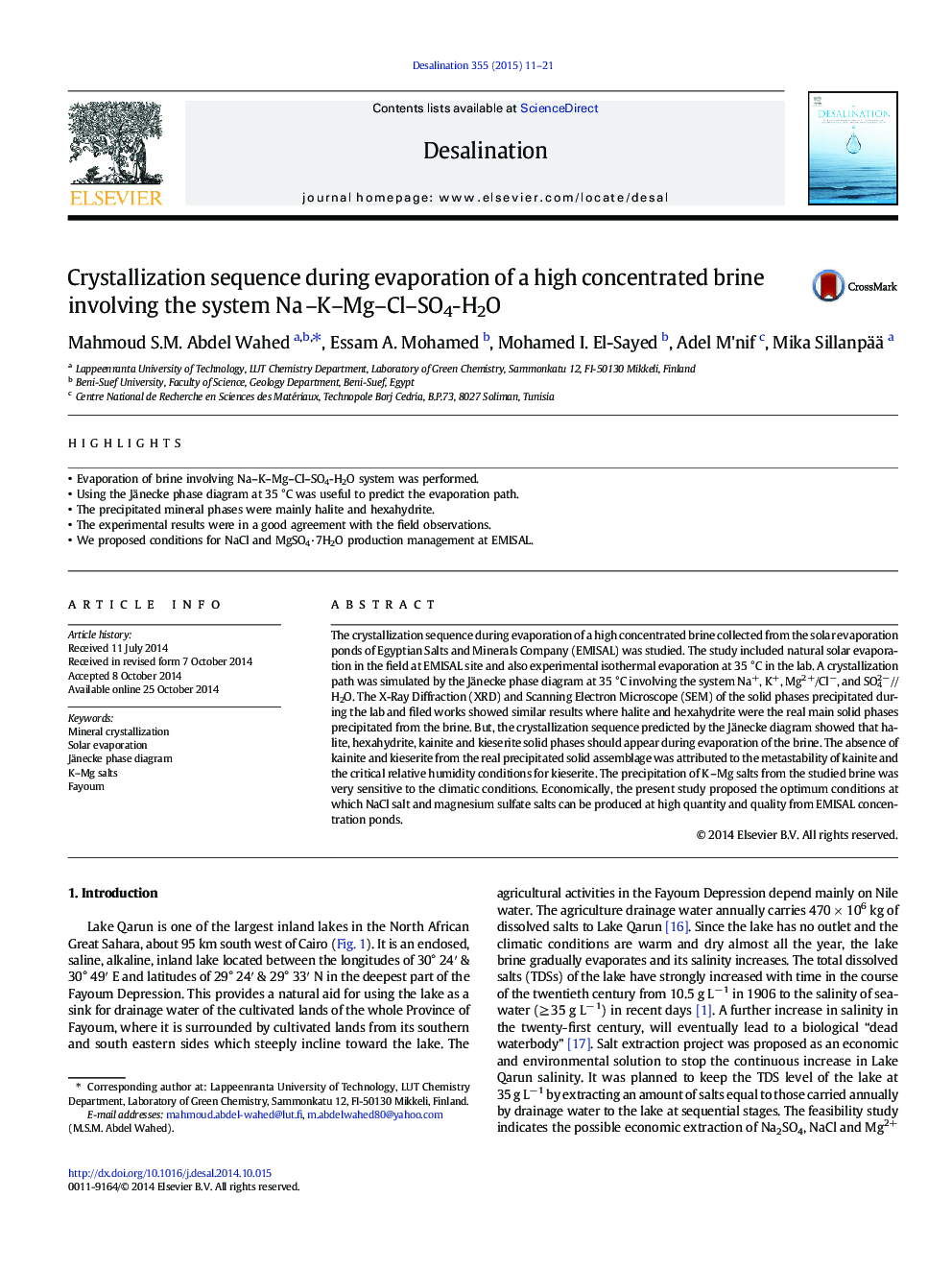| Article ID | Journal | Published Year | Pages | File Type |
|---|---|---|---|---|
| 623204 | Desalination | 2015 | 11 Pages |
•Evaporation of brine involving Na–K–Mg–Cl–SO4-H2O system was performed.•Using the Jänecke phase diagram at 35 °C was useful to predict the evaporation path.•The precipitated mineral phases were mainly halite and hexahydrite.•The experimental results were in a good agreement with the field observations.•We proposed conditions for NaCl and MgSO4·7H2O production management at EMISAL.
The crystallization sequence during evaporation of a high concentrated brine collected from the solar evaporation ponds of Egyptian Salts and Minerals Company (EMISAL) was studied. The study included natural solar evaporation in the field at EMISAL site and also experimental isothermal evaporation at 35 °C in the lab. A crystallization path was simulated by the Jänecke phase diagram at 35 °C involving the system Na+, K+, Mg2 +/Cl−, and SO42−//H2O. The X-Ray Diffraction (XRD) and Scanning Electron Microscope (SEM) of the solid phases precipitated during the lab and filed works showed similar results where halite and hexahydrite were the real main solid phases precipitated from the brine. But, the crystallization sequence predicted by the Jänecke diagram showed that halite, hexahydrite, kainite and kieserite solid phases should appear during evaporation of the brine. The absence of kainite and kieserite from the real precipitated solid assemblage was attributed to the metastability of kainite and the critical relative humidity conditions for kieserite. The precipitation of K –Mg salts from the studied brine was very sensitive to the climatic conditions. Economically, the present study proposed the optimum conditions at which NaCl salt and magnesium sulfate salts can be produced at high quantity and quality from EMISAL concentration ponds.
